

Suunto Blog
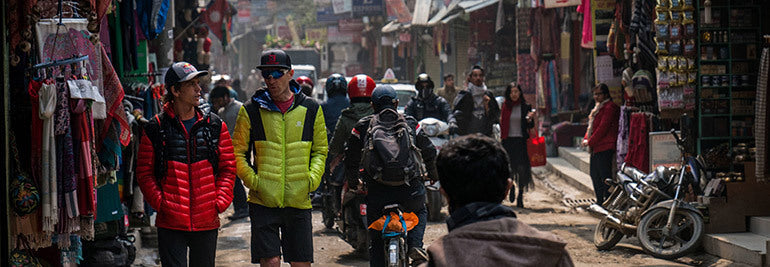
Where is Ryan Sandes right now? Far, far away in the Himalayas and hopefully moving very fast
They’ve estimated the trip at 1400km, with over 70,000 height meters gained and lost. The current FKT? 28d 13h 56m – set by fellow South African Andrew Porter in October 2016. It’s an obscure, difficult and unique challenge – one that Ryan and Ryno are among the best-suited in the world to take on.
The adventure is not only an immense physical challenge, but also a logistical one – they’ve probably already spent more time planning and researching than they will running.
Planning and researching were big part of Ryan and Ryno’s preparation for the epic run. (©Dean Leslie, Red Bull Content Pool)
The route has 12 checkpoints including start and finish. And guess what? There’s no easing into it. “The highest point will be just over 5500m,” says Ryan, “and that comes pretty early on in the Jumla region. Towards the end we’ll drop into the jungles where it will get quite warm and quite muggy, with plenty of leeches!” The speed at which they travel will largely depend on the terrain and of course, the weather. “I’ve never done anything like this with so much mileage on so many consecutive days.” So how big are those days? “We're hoping to average been 55–65 km per day.”
They’ll be somewhat unsupported – crews will place drop bags along the way at planned intervals with fresh clothes, energy bars, and other equipment like fresh shoes, socks, and replacement items like sunglasses and back-up backpacks and trekking poles – but they’ll spend most of their nights in local teahouses, eating local food. All in all, Ryan and Ryno will each have about 8kg on their back including 1.5 liters of water and a few food bars – light enough to move fast, heavy enough to make a difference. All of this was serious enough that Ryan decided to make some serious adjustments in his training. What did that mean? Get ready for this – less running.
Final preparations and logistics. (©Dean Leslie, Red Bull Content Pool)
“I spent a lot of time hiking – often with a decent load on my back, like my son Max,” says Ryan. “The goal was to really get used to spending a lot of consecutive time on my feet.” He also augmented that with plenty of strength training and alternative workouts – the nature of the adventure will require well-rounded fitness and strength to stay healthy, instead of pure speed. Some of the toughest bits will be the ups and down – as previously mentioned, 70,000 height meters of them, including some pretty big climbs – 2,000 in one single push – and one massive 4,000m descent in a single straight shot – enough to turn any trail runner’s legs to jelly.
Will they survive? Will they finish?
Good luck, Ryan, from everyone at Suunto!
All images © Dean Leslie // Red Bull Content Pool
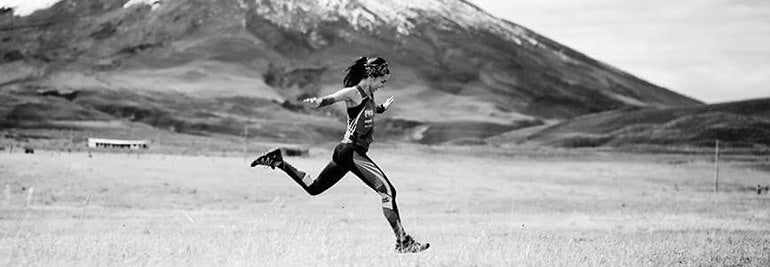
How three particular ultra marathons helped Dani Sandoval break the Aconcagua record
Records are made to be broken, and over the past few years, Aconcagua has seen quite a few of them. At 6,691 m, it’s the highest point in both the western and southern hemispheres but offers a (relatively) non-technical route to the summit – meaning it’s a favorite of trail runners who like to pack light and move fast. First, Kilian Jornet set a round-trip record in December of 2014, Swiss-Ecuadorian Karl Egloff followed just two months later cutting an hour off Kilian’s time. In 2016, Brazilian Fernanda Maciel put up a new women’s record, and now, at 20 hours and 17 minutes, we’re happy to announce the new record holder: 26-year-old Dani Sandoval from Quito, Ecuador. The young talent from South America has burst onto the scene – while ultrarunning typically takes years of training, she's ascended to elite level quickly, taking first place over 80 km at the La Misíon race in Argentina in 2016. She won two more 80 km ultras in South and Central America. But eventually, altitude called to her – and we shouldn’t be surprised – her parents were both enthusiastic mountaineers. We called her up to find out how she went from going ultra-far to ultra-high.
When, precisely, was the moment you decided to do this? It was more than a year ago when Nicolás Miranda, a fellow athlete, and I went to our first peak, Cayembe, at 5,790m. There Nico noted my body responded to altitude in a different way than most athletes. It was right then when he suggested I should try to break Aconcagua’s FKT.
How did you feel the moment you started? Mixed emotions. At the moment, the greatest was fear. Fear of failing, but the mountain was perfect, full moon, no wind, and clear skies. Suddenly fear became hope and I simply enjoyed each stage of what was the best experience of my life.
What was the most challenging part in your training?
Spending full days in the mountains, weekends at high altitudes at the end of the year, precisely during Christmas and New Year’s Eve, which are days I spend with my family. But for this project I had to say no to spending time with family, so I could train and work towards being ready for January!
Does your job as a physio help your training?
Yes, it really is an advantage. During my training in Aconcagua I suffered a second-degree sprain. I was able to recover in only 2 days and be ready for the record. I was scared, I thought the sprint would be an obstacle; but thanks to my knowledge I was able to fully recover.
You’ve done some incredibly hard races – was this harder?
Actually, it was the result of my three 80k races. The time I spent in La Misión was about approximately 20 hours, the technical difficulty of Petzl Trail Plus at Banos, Ecuador, and cold from Patagonia 80k at Torres del Paine. These three races made the Aconcagua for me.
Do you think you can better your own record more in the future? It was a big gap, but I didn’t have many recovery days between the first and the second try; so I felt my body wasn’t at 100%. I think I might be able to break my own record, but I also believe those 10h17m are for me perseverance, and fight to achieve something I dreamed despite two previous failures.
The hardest part of the run?
The last 400 m. I felt I had no air, tiredness made me feel dizzy, when I knew I was about to finish my body started to respond extremely slow. I had to sit down and take deep breaths to get strength to continue.
What was the most enjoyable, comfortable, peaceful moment during that run?
The most enjoyable time was when I happened to be in the same spot where days before we had winds of 75 km/h. It just as I was getting to Colera, one of the camps. Whereas days before I suffered pain and difficulty, this time when I arrived the sun was rising, warming me, and the scenery was amazing. The mountain was offering the best weather, and it was there I felt I could make it.
What’s up next? More mountains, or more ultras?
Both! I want to keep my projects and be able to make a 170k. I will prepare for one ultramarathon per year. For instance, in 2018 I want to make my first 100k, then go for 120k and eventually 170k. I also want to do speed climbing in Ecuador in order to gain experience and, why not, try mountains outside of Ecuador. In my mind I have the goal of reaching 8000 meters. All step by step so I arrive at each goal with great joy!
Images by Matthieu Perrault
Vertical Week 2018
Now is the time to celebrate both the suffering and the flying. Welcome to the third annual Vertical Week!
Vertical Week 2018 starts on Monday, February 26 and ends on Sunday, March 4. Put on your running shoes, hop on your bike or release your heels and start skinning up the hill.
Track your adventures with your Suunto watch, sync with Suunto App, and by the end of the week we’ll know which country climbs the most in a week.
Every move counts!
Share your Vertical Week experiences on Instagram or Facebook with #VerticalWeek. Three of the most inspiring posts will win Suunto Spartan Sport Wrist HR Baro watches.
Terms and conditions apply. Read them here.
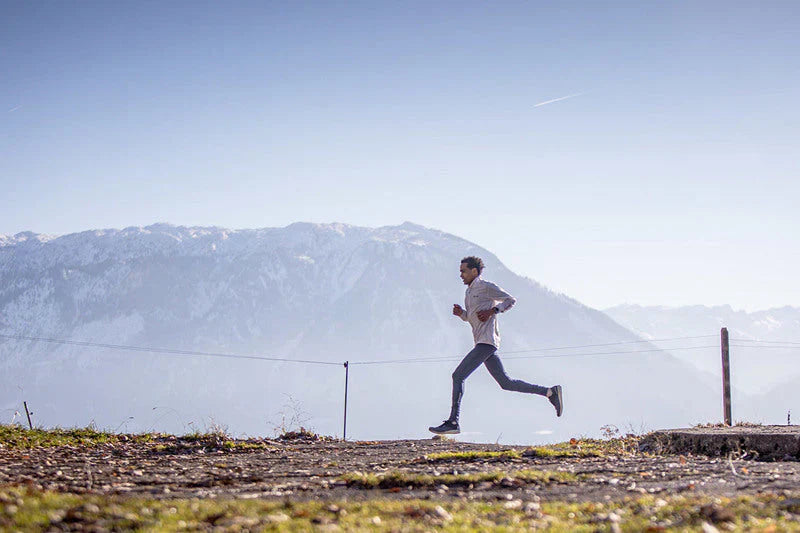
Figure out your training zones and supercharge your fitness
Key components to improve your fitness are frequency, duration and intensity. Frequency and duration are easy to understand, but training intensity is a bit more tricky. How hard is hard? And why should I care? Read on to learn about intensity zones and about defining them.
That Janne Kallio works at Suunto on new product and solution concepts shouldn’t surprise anyone – after all, triathlon is his passion. Neither are we surprised that his book (Treenaa tehokkaasti, currently only available in Finnish) can help you learn to how to use technology to improve your endurance results. But the most surprising thing? Using training zones is easy. “Training does not need to be complicated,” says Kallio.
“The key aspect of reaching progress in one’s fitness is the ability to increase the physical load over longer period of time. Research shows that for people who are only starting to train, the easiest way to progress is to simply add one more training session in the week. Running three times a week versus two will improve fitness.”
But after a certain limit, simply running more is not enough.
“Running speed increases quite linearly on all distances up to about 60–70 km per week. After that the correlation isn’t as strong. When training more than 100 km a week your running speed does not necessarily get any faster.”
What Kallio is explaining is that adding volume to your training only helps up to a certain point. After that getting faster requires focus on other things, like the correct distribution of training intensity.
“Quite common training model is the so called polarized model where a big chunk, i.e. 80 % of training, is done aerobically, and a small portion of training with high-intensity. In order to follow this type of model one needs to be aware of one’s intensity levels.”
But what does intensity actually mean?
Training on different intensities stresses your body in different ways and leads to different kind of physiological adaptation. During light or moderate efforts the energy is supplied by the oxidative system, burning fat and carbs, and your blood lactate levels remain the same as at rest (0,8–1,5 mmol/L).
As the intensity increases, lactic acid starts to build in your muscles. Your body is still able to flush it out but the lactate levels rise above your resting levels. In training terminology this is your aerobic threshold (usually marked at 1,5–2,0 mmol/L).
If the intensity of the exercise intensifies even further, at some point your cardiovascular system can’t supply your muscles with enough oxygen, and lactic acid starts to build in your muscles faster than it can be removed. This point is called your anaerobic threshold (usually at around 4,0 mmol/L).
Based on these values, five zones are defined. Zones 1 and 2 are below aerobic threshold. Zones 3 and 4 between aerobic and anaerobic thresholds. Zone 5 is above your aerobic threshold. (Some of the zone-based models split zone 5 to fit dedicated sprint / explosive training into this intensity.)
Zone 1 is for recovery and warm-ups/cool-downs, zone 2 for long endurance sessions, zone 3 for tempo work, zone 4 for high-intensity intervals and zone 5 for maximal, VO2 max efforts.
The intensity zones are commonly defined based on heart rate, running pace or cycling power. Depending of the personal preference, type of training and equipment available one can use any of these models in their training.
How to define your personal heart rate zones?
It is important to know your zones to be able to follow a training plan and to keep structure in your training. “Without this knowledge easy runs often become too hard and hard ones are not hard enough. Zones help you understand and commit to what you are supposed to do,” Janne Kallio says.
There are basically three ways to define your heart rate zones: an estimate based on your max heart rate, a field test and a lab test.
Says Janne: “Statistically an estimate based on your max heart rate is valid, but as we know, individual differences are large especially in anaerobic threshold. The first challenge is the estimation of maximum heart rate and then the percentage of this to set the right level for anaerobic threshold. The percentage is an estimation as well.”
“The estimation of maximal heart rate is a good starting point. After some really hard workouts it’s definitely good to update your maximum heart rate based on personal experience. But for a goal oriented athlete, more accurate values are needed.”
The best way to get to know your personal HR zones is to take a VO2 max test with blood lactate analyses at a lab. But that is not necessary for every athlete. You can get a good idea of your personal intensity zones with a fairly straight-forward field test: After a good warm-up, run a 30-minute, race-pace effort. 10 minutes into the test hit the lap button on your Suunto. After the test use the average heart rate of the 20-minute lap as your anaerobic threshold.
Run hard the entire half an hour, but don’t start out too hard. After doing this test a few times you will learn to pace it better.
“After you have got your anaerobic threshold, it is time to make some calculations. There is some published research done on where the aerobic level fits based on anaerobic threshold,” says Janne. “It’s good to understand that an accurate anaerobic threshold is the basis of good zone distribution.”
Zone 5: Above your anaerobic threshold. Zone 5 ends at your max heart rateZone 4: 94–99 % of your anaerobic threshold. The upper limit of zone 4 is your anaerobic thresholdZone 3: 89-93 % of your anaerobic thresholdZone 2: 83-88 % of your anaerobic threshold. The upper limit of zone 2 is your aerobic thresholdZone 1: <82 % of your anaerobic threshold. Zone 1 starts at your resting heart rate.
Note, these % values are from anaerobic threshold heart rate, not from maximal heart rate.
There are also other zone models that you can use. For example some of the zone models place your anaerobic threshold within zone 4 and in some models zone 1 does not start at rest heart rate but above it at 55 % of maximum heart rate.
Kallio says that’s not really important – it’s about the concept: “What one needs to understand is that the role of the zones is to ensure you train in different intensities.”
Different activities, different intensity zones
“It is also good to know that your heart rate zones differ slightly in different endurance sports. Activities where more muscles are working also require more oxygen meaning your anaerobic threshold is higher in these sports. You will reach your anaerobic threshold earlier in swimming than in cycling, running or cross-country skiing – in this order,” Janne reminds us. “So if you are, let’s say, a cyclist and a runner, you should test and define your zones for each of the sports to target your training intensities correctly.”
It’s just one example of how a little knowledge can help out a lot – a whole lot.
LEARN HOW TO USE SUUNTO VERTICAL'S INTENSITY ZONES
Main image © Philipp Reiter
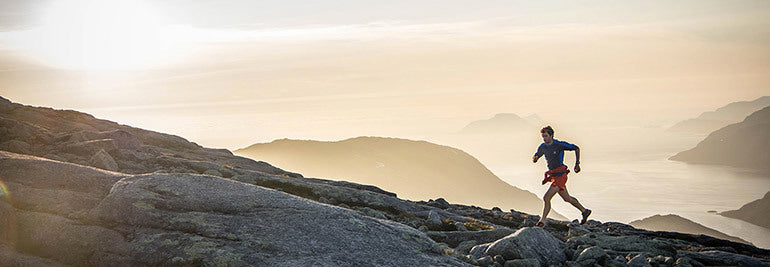
How do you train, Kilian Jornet?
Kilian Jornet has spent a lot of time in the mountains since he was a kid and has been training to improve since he was a teenager. All the hours, days and years of training have made him one of the best all mountain athletes ever. Whether running, skiing or climbing Kilian is breaking records, winning races and inspiring others.
Kilian, in the video you say: “If you don’t have pleasure when you train, you will never improve!” What makes training fun for you?
You don’t train to have fun but to improve, to reach goals or to adapt, but it is important to have pleasure doing the activity you do to spend this amount of time easily. I love to ski and run and to be in the mountains and I’m enjoying when I do that and it is part of my training.
How do you turn tough days into good ones?
Some days you just switch to work mode, listen to music in your headphones and watch the watch count the time and meters you need to do that day. Sometimes it’s more hard than fun but it is important to do. A good or bad day is not fun or not fun. Some training session can be hard and fun, fun but not hard, hard and not fun or not fun and not hard. Good or bad depends on what you have improved or learned, what have you experienced.
How has your training changed over the last 10 years?
Not much in big lines, I like the principles of training I do, like quantity over quality and specific training. They seem to work for me. I try to be open and look at new ways to train and test different things.
How is it possible to be fast from short races, like a vertical km, to super long ultras?
Train different situations, train some long days, some short. It does demand a lot of time (years) and time (hours a year) to do all different kind of training.
What are your strengths?
In physical capacities, recovery rate and VO2 max. Then psychologically I can enter a non-emotional state that helps me in stress situations. Now also my experience.
What would you still like to improve?
Many things. It’s important to work to improve both the weaknesses and the strengths.
What are you focusing on this year?
Mostly rehab and recovery from my shoulder surgery that I had in October. Then I’ll see how it goes. I had a ski fall some years ago and dislocated both of my shoulders. Since then I have dislocated them several times and knew I needed to get the operation done at some point.
I don’t really focus but try to be in good shape on average and adapt depending on the next goal that can be a long or short ski mountaineering or trail running race or mountaineering.
What motivates you to keep pushing your limits?
I just think it is great to know yourself.
Watch Kilian's video "How do I train (again and again)"
Kilian Jornet started training the day he was born. The mountains were his playground and without realizing it he created his own training philosophy that is based on repeating, trying and failing. Watch Kilian’s How do I train now!
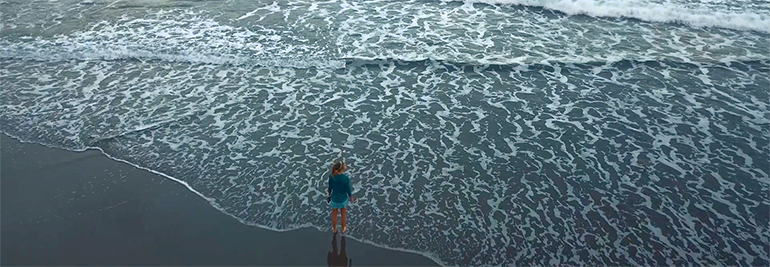
Emelie's off-season
“It’s really smooth for us Scandinavians to travel to Tenerife because of the direct flights. The island itself has a lot of variety: the beaches, green forests and the barren mountain. It has everything. I really enjoy it here”, says Emelie.
A morning run on the beach.
However, Emelie’s off-season isn’t all about relaxation.
“I heard about this run about five years ago when I was here on the island. I was really tired after a race and had one week to relax so I couldn’t do it then.”
Emelie's Suunto Spartan is ready for the route called 0-4-0.
“It is fascinating to try to do fast times on mountain routes. I want to see if I can do it fast and, if I can, it’s great. But if I can’t it’ll be a great day anyway!”
Watch the video and follow along on Emelie’s holiday in Tenerife.














































































